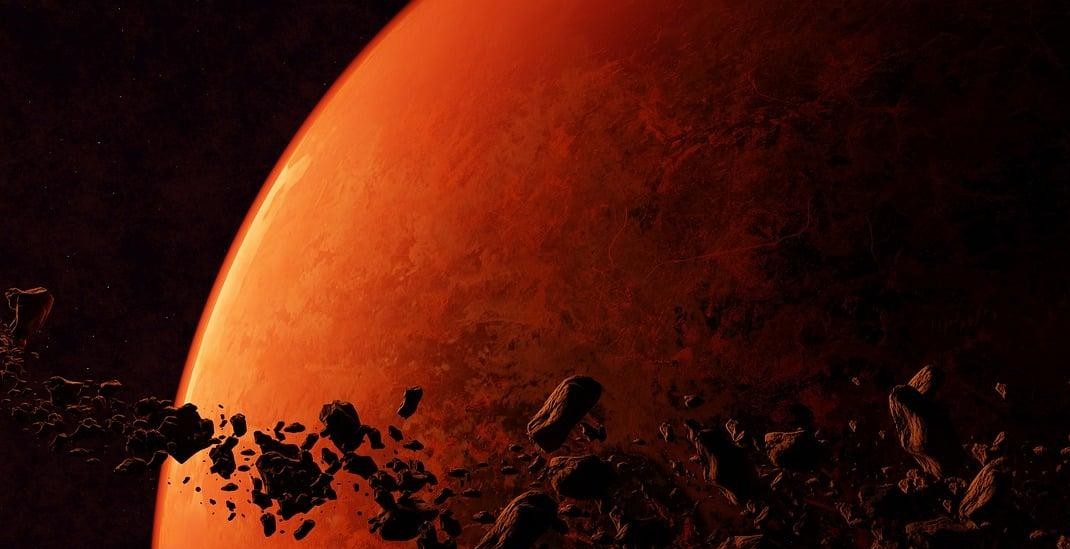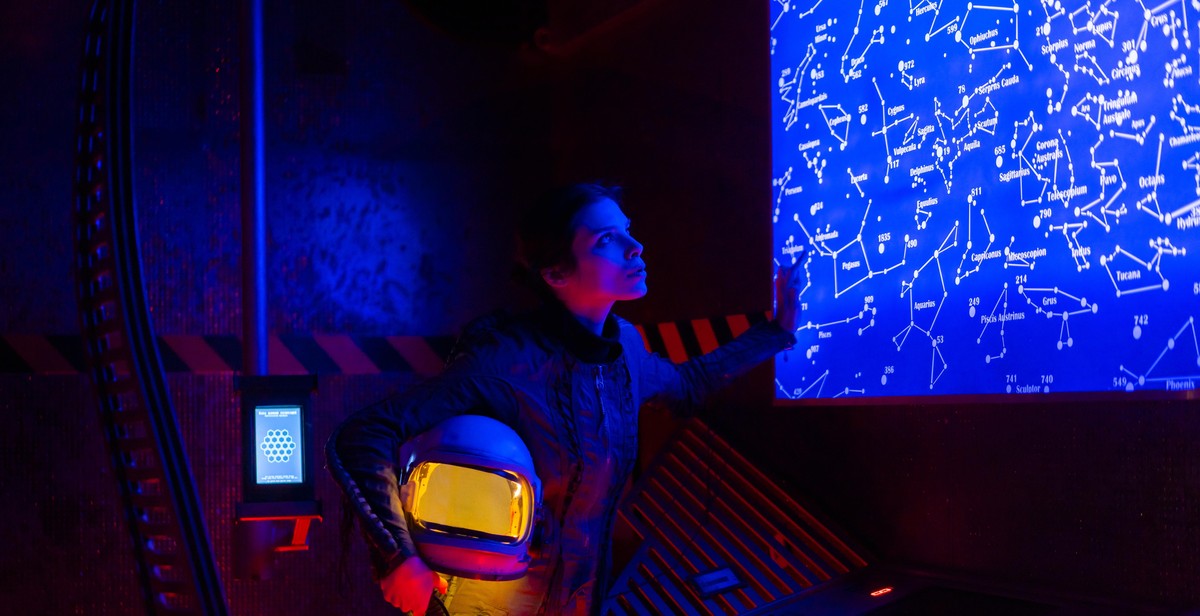Is Interstellar Travel a Reality or Just Sci-Fi?
Introduction:
Interstellar travel has long been a fascinating concept in science fiction, but is it something that could become a reality in the future? With advancements in technology and our growing understanding of the universe, the possibility of humans venturing beyond our own solar system is no longer confined to the realm of imagination.
In this article, we will explore the current state of interstellar travel research and examine the challenges that scientists and engineers face in making it a reality. We will delve into the potential propulsion systems, spacecraft designs, and energy sources that could enable us to travel vast distances in space.
Furthermore, we will discuss the impact of interstellar travel on humanity and the potential benefits and risks associated with venturing into the unknown. From expanding our knowledge of the universe to potentially discovering habitable exoplanets, interstellar travel has the potential to revolutionize our understanding of the cosmos.
However, it is crucial to acknowledge the immense technological, financial, and ethical hurdles that need to be overcome. We will also address the skepticism surrounding interstellar travel and the arguments against its feasibility.
Join us as we embark on a journey through the possibilities, challenges, and implications of interstellar travel, separating fact from fiction, to determine whether it is truly a reality or remains confined to the realm of science fiction.
The Concept of Interstellar Travel
Interstellar travel refers to the ability to travel between stars within a galaxy. It is a concept that has fascinated scientists, researchers, and science fiction enthusiasts for decades. The idea of exploring distant star systems and potentially discovering extraterrestrial life has captured the imagination of many.
Understanding Interstellar Travel
Interstellar travel involves overcoming the vast distances and challenges associated with traveling between stars. In order to achieve this, various theoretical concepts and technologies have been proposed.
One of the most commonly discussed concepts is the use of spacecraft propelled by advanced propulsion systems. These systems would need to be capable of reaching speeds close to the speed of light, as the distances between stars are immense. Theoretical propulsion technologies, such as antimatter propulsion, fusion propulsion, or even utilizing the power of black holes, have been proposed as potential solutions to this challenge.
Another concept is the idea of wormholes or warp drives, which would allow for the bending of space-time, creating shortcuts or pathways that could be used to travel between distant star systems. Although these concepts are purely theoretical at this point, they continue to be subjects of scientific exploration and speculation.
The Challenges of Interstellar Travel
Interstellar travel poses numerous challenges that make it a daunting task to accomplish. The distances between stars are vast, with even the closest star system, Alpha Centauri, located about 4.37 light-years away. This means that traveling at the speed of light would take over four years to reach this neighboring star system.
Additionally, the energy requirements for achieving the necessary speeds to travel between stars are immense. The amount of fuel or energy needed to propel a spacecraft close to the speed of light is currently beyond our technological capabilities. Overcoming this challenge would require significant advancements in propulsion systems and energy generation.
Furthermore, the effects of prolonged space travel on human beings also need to be considered. The journey to another star system could potentially take decades or even centuries, and ensuring the health and well-being of astronauts during such extended periods in space presents significant physiological and psychological challenges.
In conclusion, while the concept of interstellar travel is a fascinating one, it remains largely in the realm of science fiction. However, ongoing scientific research and advancements in technology may one day bring us closer to realizing this dream of exploring the stars beyond our own solar system.
Proposed Methods for Interstellar Travel
Interstellar travel, once confined to the realm of science fiction, is now being explored as a potential reality. Scientists and researchers have proposed several methods that could potentially enable us to travel to distant stars and explore the vastness of the universe. Some of the most promising methods include:
1. Warp Drive
Warp drive, popularized by the Star Trek series, is a concept that involves manipulating the fabric of space-time to achieve faster-than-light travel. By creating a warp bubble around a spacecraft, it would be possible to compress space in front of the ship and expand it behind, allowing for faster-than-light travel. Although the theoretical foundations of warp drive exist, the practical implementation remains a significant challenge.
2. Wormholes
Wormholes are hypothetical tunnels that connect two distant points in space-time, potentially allowing for near-instantaneous travel between them. These tunnels would bypass the need for conventional travel through space and time, effectively creating shortcuts. However, the stability and construction of wormholes remain unknown, and significant energy requirements would be necessary to stabilize and traverse them.
3. Generation Ships
Generation ships involve sending a self-sustaining spacecraft on a multi-generational journey to another star system. The ship would carry a crew that would live, reproduce, and die onboard, with subsequent generations continuing the journey until reaching the destination. This method relies on creating an environment that can support long-term habitation and ensuring the crew’s health and well-being throughout the journey.
While these proposed methods offer exciting possibilities for interstellar travel, significant scientific and technological advancements are necessary to make them a reality. The challenges of energy requirements, stability, and long-duration space travel pose considerable obstacles that must be overcome. Nonetheless, continued research and exploration in these areas bring us one step closer to unlocking the mysteries of the universe beyond our solar system.

Current Technological Advancements
Several recent technological advancements have brought the concept of interstellar travel closer to reality than ever before. These breakthroughs include:
Breakthrough Starshot
Breakthrough Starshot, a project initiated by billionaire Yuri Milner and supported by renowned physicist Stephen Hawking, aims to send a fleet of tiny spacecraft to our nearest star system, Alpha Centauri. This ambitious project proposes using ultra-lightweight nanocrafts equipped with sails to be propelled by a powerful laser beam from Earth. With speeds reaching up to 20% the speed of light, these nanocrafts could potentially reach Alpha Centauri within a few decades. The development of this technology could pave the way for future interstellar missions.
NASA’s Starshade
NASA’s Starshade is another advancement that could greatly contribute to interstellar exploration. This large, flower-shaped spacecraft is designed to block out the glare of distant stars, allowing telescopes to observe exoplanets with greater precision. By improving our ability to study exoplanets, scientists can gather crucial data to assess their habitability and potential for supporting life. This knowledge is crucial in identifying potential destinations for future interstellar missions.
Project Orion
Project Orion, a concept proposed by physicist Freeman Dyson, explores the possibility of using nuclear propulsion for interstellar travel. This groundbreaking idea involves detonating a series of nuclear bombs behind a spacecraft, utilizing the force of the explosions to propel it forward. While this concept raises ethical and safety concerns, it demonstrates the innovative thinking required to overcome the challenges of interstellar travel.
These advancements, along with ongoing research and technological breakthroughs, have brought interstellar travel out of the realm of science fiction and into the realm of possibility. While significant challenges remain, such as the development of sustainable propulsion systems and protection against cosmic radiation, these advancements have laid the foundation for future exploration beyond our solar system.

The Search for Exoplanets
The search for exoplanets, planets that orbit stars outside our solar system, has been a major focus of scientific exploration in recent years. With the advancements in technology and the development of specialized space missions, such as the Kepler Mission and the Transiting Exoplanet Survey Satellite (TESS), astronomers have made significant progress in discovering and studying these distant worlds.
The Kepler Mission
The Kepler Mission, launched by NASA in 2009, was designed to survey a specific region of the Milky Way galaxy to determine the frequency of Earth-sized planets in or near the habitable zone of their star. It used the transit method, which detects exoplanets by measuring the periodic dips in brightness as they pass in front of their host star. Over its nine-year mission, Kepler discovered thousands of exoplanets, including some that are potentially habitable.
The data collected by Kepler has provided valuable insights into the diversity and distribution of exoplanets. It has revealed that small rocky planets, similar in size to Earth, are common in our galaxy. Kepler also found that some exoplanets orbit their stars in the habitable zone, where conditions may be favorable for liquid water and potentially life as we know it.
The Transiting Exoplanet Survey Satellite (TESS)
Building on the success of the Kepler Mission, NASA launched the Transiting Exoplanet Survey Satellite (TESS) in 2018. TESS is designed to search for exoplanets using the same transit method as Kepler but with an expanded scope. It covers a much larger area of the sky, observing nearly the entire sky over a two-year period.
TESS has already made significant discoveries, including the identification of over 2,200 candidate exoplanets. Its primary goal is to find exoplanets that are relatively close to Earth, making them suitable targets for further study by future missions, such as the James Webb Space Telescope.
The combination of data from Kepler and TESS has revolutionized our understanding of exoplanets and their prevalence in the universe. These missions have laid the foundation for future exploration and the search for potentially habitable worlds beyond our solar system.

The Future of Interstellar Travel
Interstellar travel, once considered a mere concept of science fiction, is steadily becoming a reality. Advancements in propulsion systems, collaborative efforts and research, and the role of artificial intelligence are paving the way for humanity to explore the vastness of space beyond our solar system.
Advancements in Propulsion Systems
The development of advanced propulsion systems is crucial for interstellar travel. Traditional propulsion technologies, such as chemical rockets, are insufficient for long-distance space travel. However, innovative concepts like ion propulsion, nuclear propulsion, and even the theoretical concept of warp drives are being explored. These propulsion systems offer the potential for faster travel and reduced travel times, making interstellar journeys more feasible.
Collaborative Efforts and Research
Interstellar travel requires collaborative efforts among nations, organizations, and scientists. International collaborations, like the Breakthrough Starshot initiative, bring together experts from various fields to overcome the challenges of interstellar travel. These collaborative efforts pool resources, knowledge, and expertise to accelerate research and development in areas such as propulsion, spacecraft design, and navigation systems.
The Role of Artificial Intelligence
Artificial intelligence (AI) plays a significant role in the future of interstellar travel. AI algorithms and machine learning techniques are utilized for spacecraft navigation, autonomous decision-making, and optimizing mission plans. AI can analyze vast amounts of data, predict potential obstacles, and adapt to unforeseen circumstances, making interstellar travel safer and more efficient.
In conclusion, the future of interstellar travel is no longer confined to the realm of science fiction. With advancements in propulsion systems, collaborative efforts and research, and the integration of artificial intelligence, humanity is inching closer to unlocking the mysteries of the universe beyond our solar system.
